Introduction to WorkAdventure
WorkAdventure
- https://workadventu.re/, https://github.com/thecodingmachine/workadventure
Web-based collaborative workspace [...] in the form of a 16-bit video game.
- GNU AGPL Version 3, with the Commons Clause
- Integrated video and text chat, audio playback, Jitsi rooms, websites in iframes
Tilesets
- PNGs that contain 32x32 px tiles
- Maps are drawn using these tiles
- Map elements may span more than one tile
-
Some sample tilesets:
- https://git.cccv.de/rc3/world-tiles - rC3 world tiles
- https://github.com/mstock/rC3-OSM-Tileset/ - OSM-Carto styled tiles
Tiled
- https://www.mapeditor.org/
- Used to build maps
- Supports more features than WorkAdventure
-
Maps must be...
- ... saved as JSON for use with WorkAdventure
- ... orthogonal and tiles size should be 32x32
Add Tileset
- Tilesets must be embedded
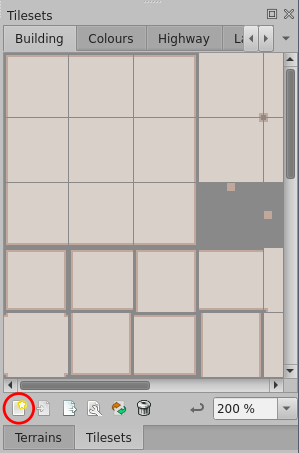
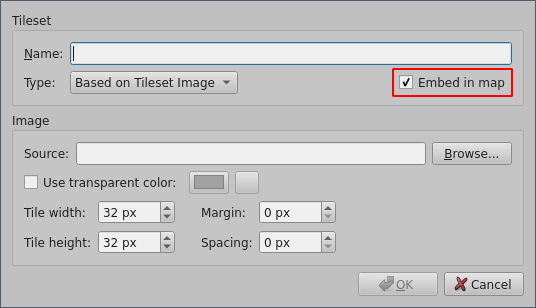
Layers
- Group different kinds of map elements
-
Also used to add interactivity/functionality via layer properties
- Put a tile where something should happen
- Only tile layers (and one special object layer) supported by WorkAdventure
- Layers can be highlighted
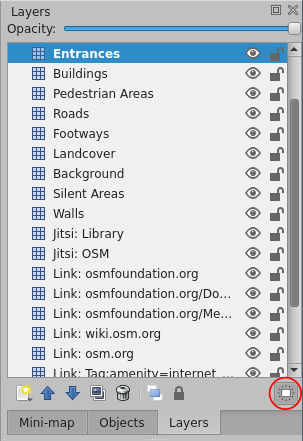
Required Layers
floorLayer- Layer where avatar resides, the special object layer
start- Non-empty layer where avatar gets put by default when entering map
Special Layers I
- Exits
-
exitUrlstring property- Start layer at target selectable using
#<layer name>suffix/anchor
- Entry points
-
- Boolean
startLayerproperty - Layer name can be used as target
<layer name>for exits - Use different tiles for start and exit
- Boolean
Special Layers II
- Websites
-
openWebsitestring propertyopenWebsiteTriggerstring property withonactionrequires key press- Website must allow being displayed in frame
- Jitsi rooms
-
jitsiRoomstring propertyjitsiTriggerstring property withonactionrequires key press
Special Layers III
- Silent areas
-
- Boolean
silentproperty
- Boolean
- Sounds or background music
-
playAudioandplayAudioLoopstring properties with URL
Collisions
- Boolean
collidesproperty on single tiles
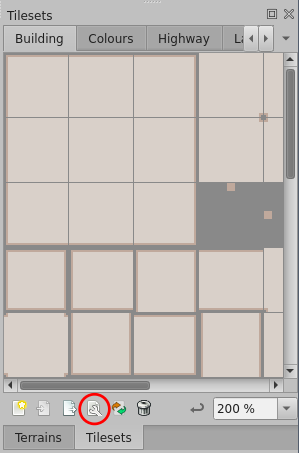
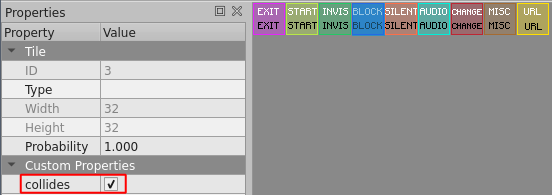
Krita I
- https://krita.org/
- Raster graphics editor suitable to create tilesets
-
Special brushes for pixel art:
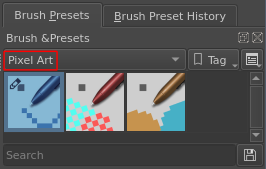
Krita II
-
Use 32x32 px grid (or a smaller power of 2, but with larger subdivision):
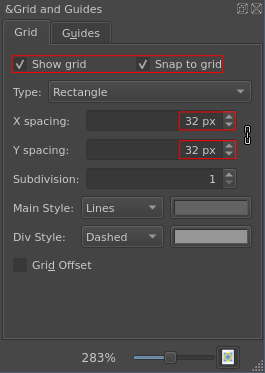
Krita III
-
Use file layers to assemble larger tilesets from smaller ones:
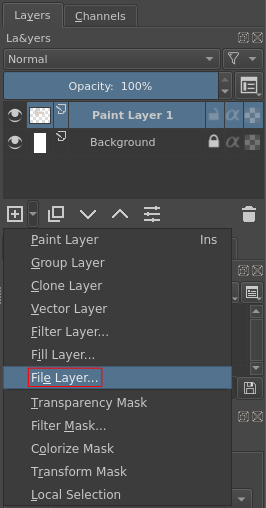
General hints
- Think of how the map should look like before starting in Tiled, maybe prototype in a vector drawing program
- Think about a convention for layer names, especially entry points and exits
- Use utility tiles on special layers
- Mark areas used as entry and their surroundings as silent
Sample maps
- https://github.com/mstock/rC3-OSM-Map - OSM map used at rC3, uses some custom features
- https://github.com/fossgis/FOSSGIS-WorkAdventure-Maps - map used at FOSSGIS-UPDATE conference
- https://github.com/DigitaleGesellschaft/workadventure-map-winterkongress - Digitale Gesellschaft Winterkongress maps
- https://github.com/DigitaleGesellschaft/workadventure-map-bitwaescherei - Bitwäscherei map
Further reading
- https://workadventu.re/map-building - official tutorial, contains lots of useful information
- https://howto.rc3.world/maps.en.html - rC3 tutorial
- https://codimd.c3d2.de/WA-Zone-Beginners-02 - WA Beginners Workshop
- https://git.imaginaerraum.de/latchup/rc3/src/branch/master/rc3_notes.md - notes from a workshop by latchup